
We have always said it: The Griffon Vulture migration in Tarifa is one of the greatest spectacles of nature. Every spring and every autumn, we choose the best raptor migration observatories in Tarifa to enjoy the show with our clients. No matter how many hours we have spent enjoying this overlooked wonder, there is always something new to discover. We do never get enough!
We could have never imagined, however, that we would witness a memorable moment of Griffon Vulture migration from home. This can only happen in Tarifa, of course!
#birdingathome
Last 7th of April, strong easterly winds were blowing in the strait. Gales reached up 25 knots. Under these circumstances, we wouldn’t expect any raptor migration going on over Tarifa.
At noon, Javi was working on his computer when he heard the alarm call of a Yellow-legged Gull. Instinctively, he grabbed his binoculars and leaned off the window. Much to his surprise, he saw a Griffon at eye level! Next, he hurried to get his camera and ran to the terrace. Over the next 20 minutes he witnesses a steady arrival of Griffons to Europe, after crossing the strait of Gibraltar.

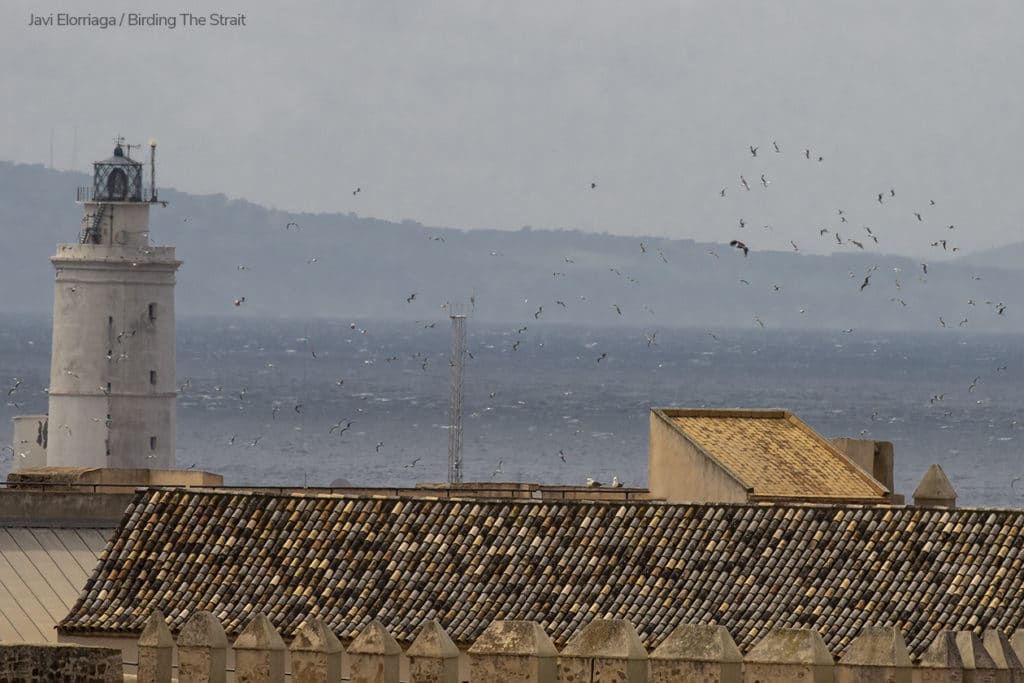
The “levante” wind pushed those vultures to lower altitudes. Some were flying flush water drills, exhausted. Moreover, the wind made them drift west. This way, vultures were forced to fly an increased distance across the ocean. Moreover, some ended up flying over the “Isla de Las Palomas” in Tarifa (the southernmost tip of the continent). Here, there is a large colony of Yellow-legged gulls.
Angry Gulls
If there is something gulls do not tolerate, is a large raptor around their territory. In addition, gulls seem to have a special ability to detect birds that are struggling.

Flocks totalling over 100 gulls fiercely chased the unprepared Griffons. Certainly, they were not expecting such a hostile reception!
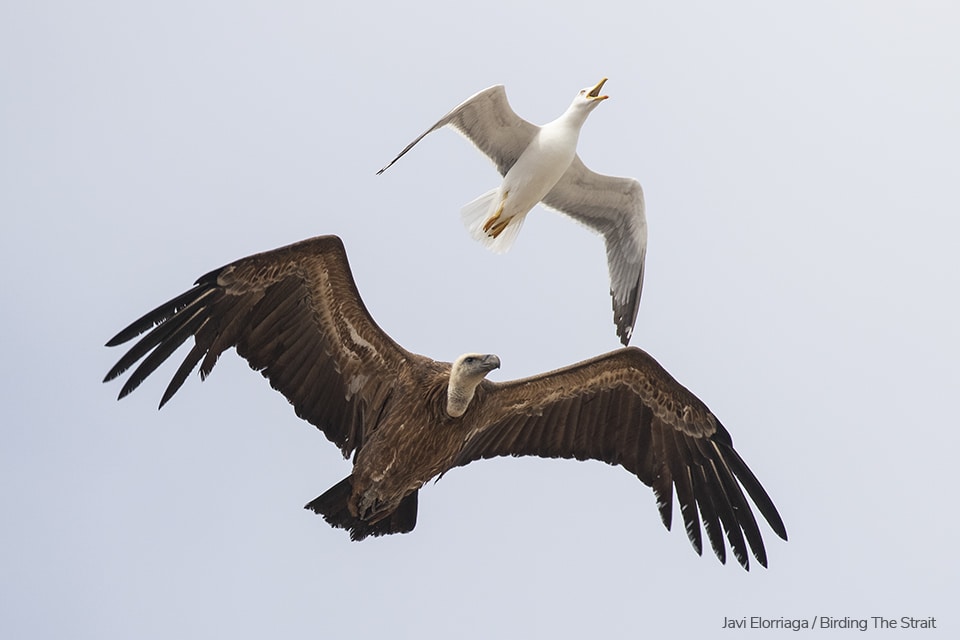
Griffon vulture down
One of the Griffons, notably exhausted after sea-crossing with the strong wind, was attacked with special venom. As a result, the vulture lost its balance and was brought down to the ground. He was forced to an emergency landing in Tarifa. Luckily, the vulture rapidly found shelter in a rock outcrop. About half an hour later, it caught its breath and took off.
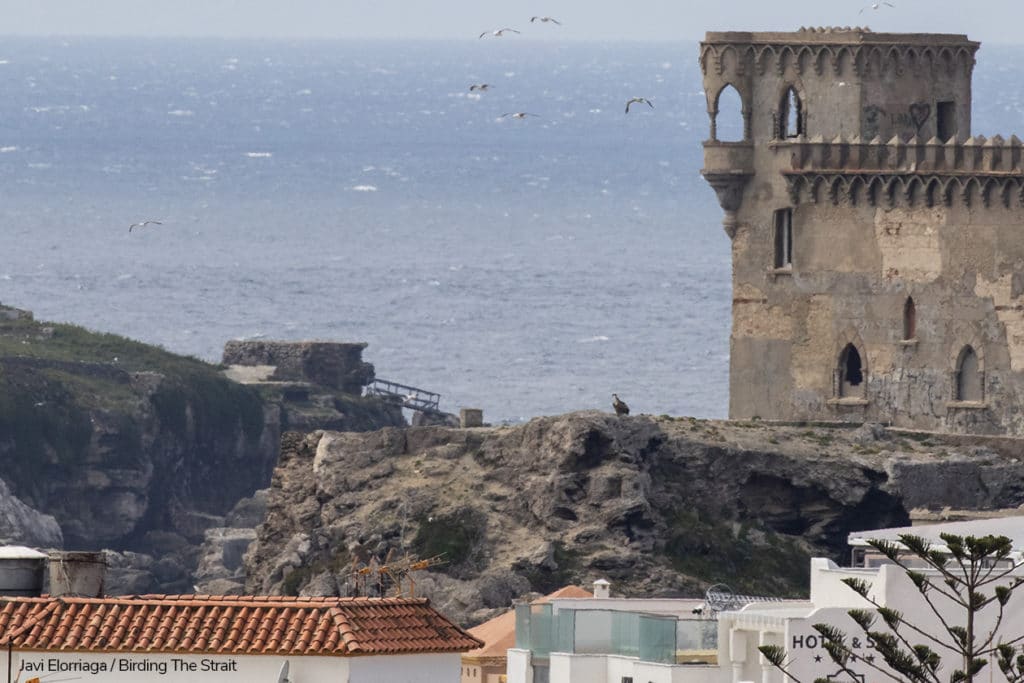
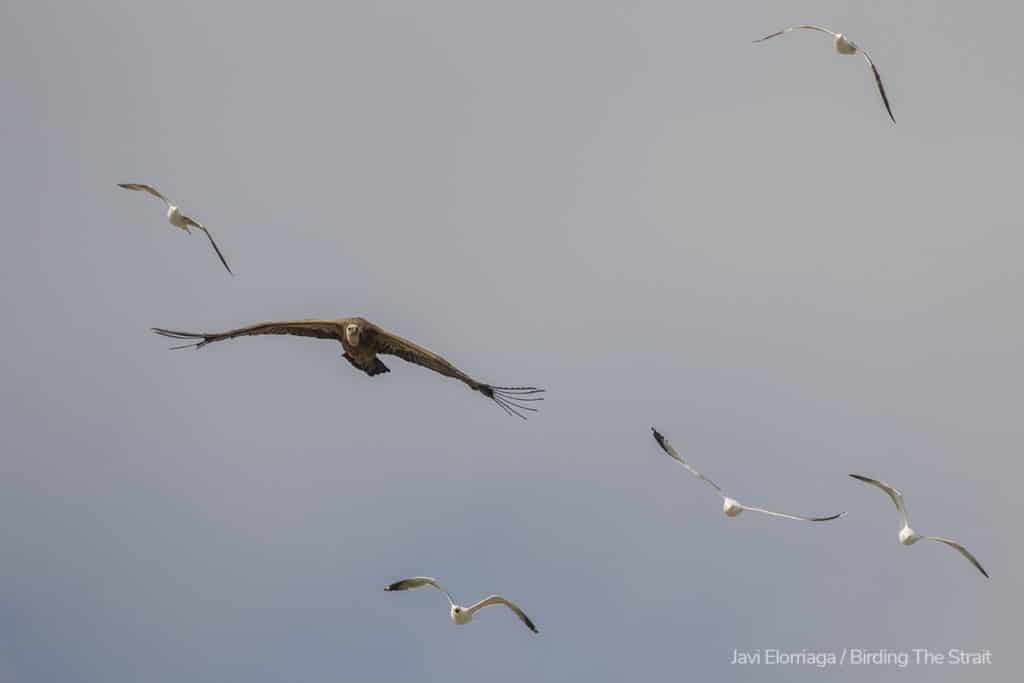
The following pictures show some scenes of the Griffon Vulture in active migration above Tarifa, and a dramatic encounter with angry gulls.
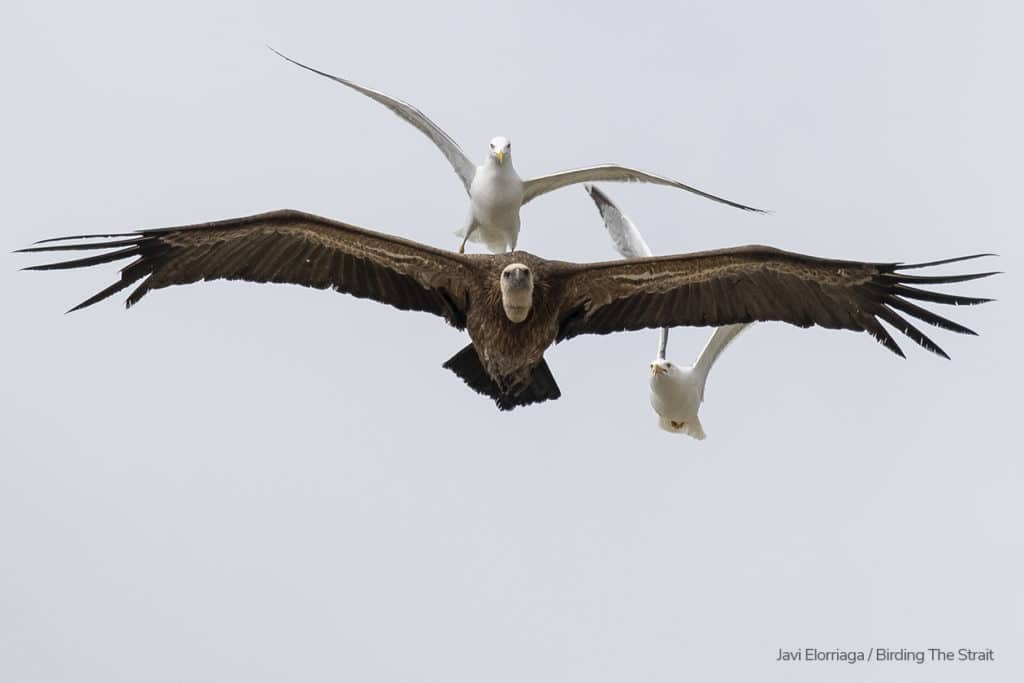
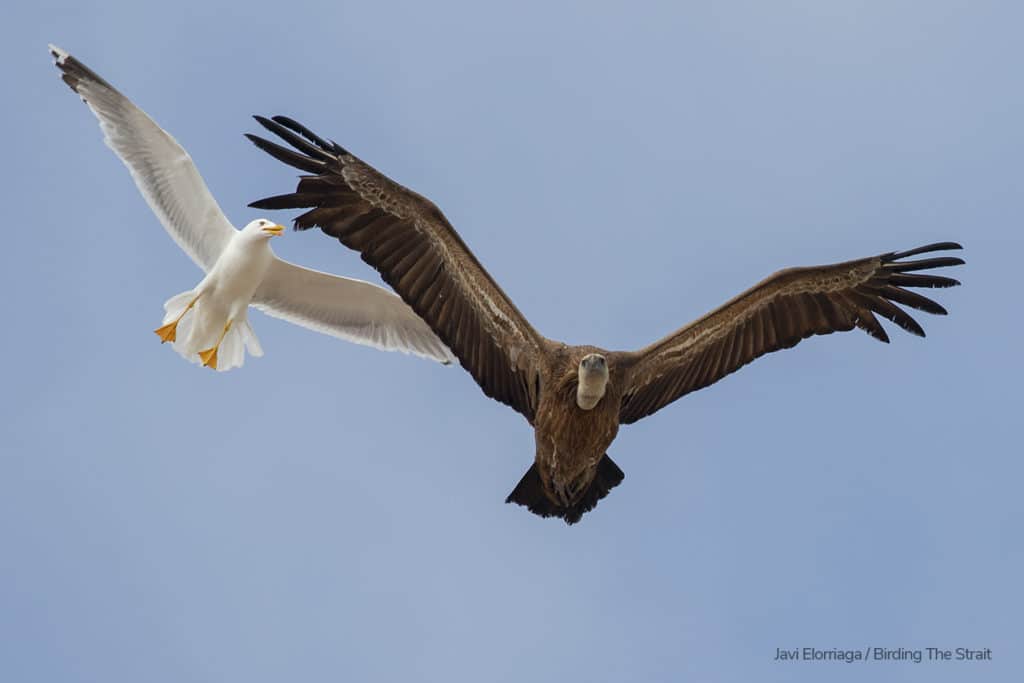

This event reminds us of another astonishing Griffon Vulture migration vs gulls we witnessed some years ago: “The Griffon that swam across the Strait of Gibraltar” previously reported on the Birding The Strait Blog.
Griffon Vulture migration in Tarifa
If you want to learn more about the spring migration of Griffon Vultures in the Strait of Gibraltar we recommend this academic paper by our good friends, and fellow vulture enthusiasts, Juan, Pako and Marina.
May and early June in the spring, and late October to mid-November in the Autumn, are the best periods to enjoy the Griffon Vulture migration in Tarifa and the Strait of Gibraltar. For this reason, we organize specially dedicated day trips, tours and photography workshops to the Griffon Vulture migration every year. If you want to keep informed on our forthcoming guided visits drop as an email or subscribe to our newsletter.